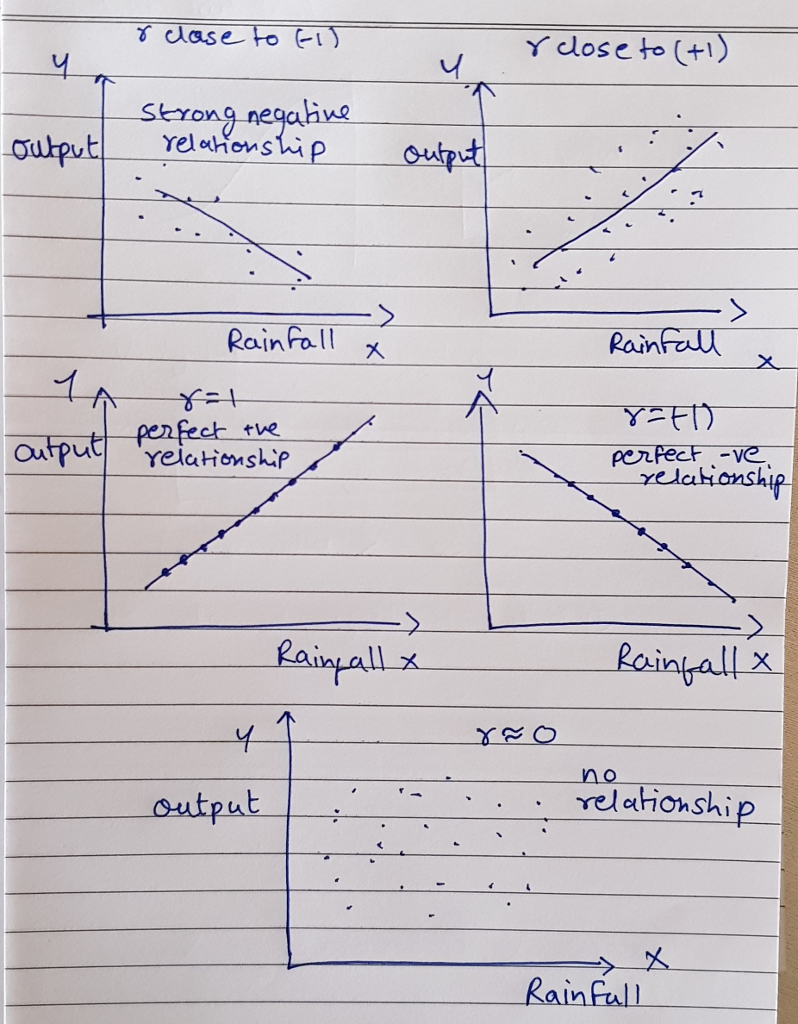Question
In: Math
What are the major difference between univariate, bivariate, and multivariate analysis? What is the difference between...
What are the major difference between univariate, bivariate, and multivariate analysis?
What is the difference between correlation and regression?
Inferential statistics allow us to
Solutions
Expert Solution
The major difference between univariate, bivariate and multivariate analysis-
Univariate analysis involves just one variable. For example - Analysing the mean/median/mode of the heights of the population in a city
Bivariate analysis involves two variables. For example- Checking if there is a correlation between the heights and weights of the population in a city
Multivariate analysis involves more than 2 variables. For example- Predicting the selling price of a house based on factors such as the size of the house, proximity to popular spots, climate (in terms of average monthly temperature) etc
Difference between regression and correlation
Regression is primarily establishing a relationship between two or more variables. Here the value of one variable depends on the other(s). For example- Given that crop output is dependent on rainfall, regression finds a relation between these 2 variables in mathematical terms as follows-

Output here is the dependent variable whereas rainfall is the independent variable.
Correlation, on the other hand, gives us the strength of the relationship between the variables. In our example, it would give us an idea of how close is output dependent on rainfall. Correlation is measured using the correlation coefficient and its value ranges from -1 to 1.

The below scatterplots show how the value of r varies depending on the strength of the relationship between crop output and rainfall-

Inferential statistics allow us to draw inferences or conclusion about the population parameters based on the sample statistics. Eg. Drawing a conclusion about the average income of all the residents in a city based on a sample of 1000 residents.
Related Solutions
What is the difference between a Univariate outlier screen and a Multivariate outlier screen?
What is the main advantages of utilizing a single multivariate analysis over multiple bivariate analyses?
From univariate to bivariate Suppose you are interested in studying the effect of education on wages....
1. Why is a multivariate regression model usually better to use than a univariate regression model?...
What are the differences between MANOVA and discriminant analysis? What situations best suit each multivariate technique?
What are the differences between MANOVA and discriminant analysis? What situations best suit each multivariate technique?
1. Briefly describe two shortcomings of univariate methods in ratemaking and explain how multivariate methods behave...
Univariate models and multivariate models will provide different results when modeling one particular time series. TRUE...
What is one major similarity and one major difference between Freud and Jung?
Describe the process for applying multivariate analysis.
- 3b. Describe the versatility of the glucose phosphate molecule. 3b. How do plants utilize this molecule?...
- A cross-country pipeline transports crude oil at a rate of 500,000 barrels per day. The pressure...
- Today I read articles and texts about Dirac monopoles and I have been wondering about the...
- The equilibrium constant (KP) is 0.16 at a particular temperature for the reaction: N2O4(g) ⇌ 2NO2(g)...
- Why have we not seen a US-based terrorist organization established with the goal to see the...
- Write a complete C++ program that prompts the user for the price of the prix fixe...
- Problem 5-29 Changes in Cost Structure; Break-Even Analysis; Operating Leverage; Margin of Safety [LO5-4, LO5-5, LO5-7,...
 milcah answered 2 weeks ago
milcah answered 2 weeks ago